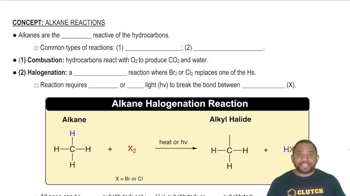Here are the essential concepts you must grasp in order to answer the question correctly.
Electrical Conductivity
Electrical conductivity is a measure of a solution's ability to conduct electric current, which depends on the presence and concentration of ions in the solution. The more ions present, the higher the conductivity, as ions are the charge carriers. In titration, changes in conductivity can indicate the progress of the reaction and the formation of new ions or complexes.
Recommended video:
Extensive Property Example
Titration and Reaction Types
Titration is a quantitative analytical technique used to determine the concentration of a solute in a solution by reacting it with a titrant of known concentration. Different types of titrations, such as acid-base or precipitation titrations, involve specific reactions that affect the ion concentration and, consequently, the conductivity of the solution. Understanding the nature of the reactants and products is crucial for predicting conductivity changes.
Recommended video:
Common Types of Alkane Reactions
Ion Formation and Precipitation
During titration, the formation of new ions or precipitates can significantly alter the conductivity of the solution. For example, in the titration of KCl with AgNO3, a precipitate of AgCl forms, reducing the number of free ions in solution. In contrast, the titration of HF with KOH involves the neutralization of an acid and a base, which affects the ion concentration differently, impacting the conductivity readings throughout the titration process.
Recommended video:




